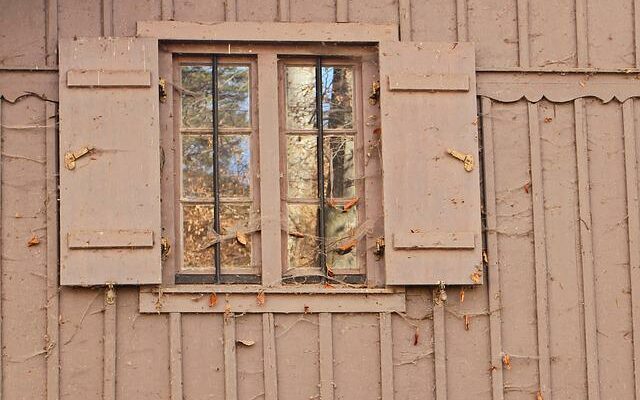Measuring wood windows for replacements doesn’t have to be as complicated as it sounds. You can easily get the proper measurements for replacement windows to send to your window manufacturer with the right tips and tools. By following these steps, you’ll save your window manufacturers time and money (which saves you time and money) and make the installation process as fast as possible.
Measuring Windows For Replacements
It can be tempting to jump right in and start measuring. But before you do, read through these tips and steps for measuring wood windows to make sure you’re fully prepared.
- Measure outside: Where possible, take your measurements from outside. This will offer the most accurate results.
- Measure in millimetres: This is the most common measurement used for installing windows. This gives you better accuracy and saves your window manufacturer from having to convert to metric.
- Use a ruler rather: While measuring tape may be tempting, a ruler will never bend, giving you much more accurate measurements.
- Measure brick to brick: This is very important. Measuring brick to brick will give the window manufacturers the exact measurements they need to replace any windows. If the brick is layered underneath the render, chip away at it until you can see the brickwork. This will have to be removed anyway to install the new windows.
- Deduct 10mm from your measurements: This ensures that the windows will fit in the openings. Your manufacturers will fill any gaps with timber and caulk once the windows are installed. Make sure to tell your manufacturers that you’ve already done this, otherwise they may deduct a further 10mm themselves and you’ll end up with windows that are too small to fit.
- Never measure old frames: Old frames are prone to warping and changing shape over time, It’s always better to measure the hole for the window instead.
- Double and triple check your measurements: Taking the measurements yourself means that your window manufacturer will be unlikely to accept responsibility for any mid-sized windows. Double and triple check the measurements before you send them off to your manufacturer.
Step 1: Measure The Width
You’ll want to take your measurement in three places because many older buildings have shifted over time and some window openings may not be completely symmetrical.
- Measure across the top
- Measure across the middle
- Measure across the bottom
- Take the smallest measurement
- Deduct 10mm
Step 2: Measure The Height
- Measure the left side of the window opening from top to bottom, remembering to measure from the brick
- Measure the centre from top to bottom
- Measure the right side from top to bottom
- Take the smallest measurement
- Deduct 10mm
Step 3: Measure The Depth
To measure the depth, you’re going to want to open your window and measure between the inside window trim, and the outside blind stop strip. This is a rectangular moulding that is nailed between a window frame’s outside trim and sash.
Measure in multiple places and if the measurements don’t match, take the largest measurement.
Step 4: Check Window Is Perfectly Rectangular
This can be a great measurement to give your window manufacturers so that they are aware of any unsymmetrical points in the window opening. To check if your window opening is perfectly rectangular, you’ll want two measurements:
- Bottom right to top left
- Bottom left to top right
If these measurements match, then your window is completely symmetrical. If not, make a note of the different measurements and let your window manufacturer know.
Measuring Windows With Arches
To measure windows with arches, you’ll follow the same procedure as a rectangular window, with one added measurement: The bottom of the window to the top of the arch.
In total, there are four measurements for an arched window:
- Rectangular Height: Bottom of the window to the top of the rectangular part of the window frame
- Width: Measured at the top of the rectangular part, middle of the rectangular part, and bottom of the rectangular part.
- Depth of window: as described above
- Bottom of the window to the top of the arch: This will likely be the very middle of the bottom of the window. From here, you’ll want to measure in a straight line to the top of the arched part of the window.
- Any other measurements: Depending on your project, your window manufacturers may need some extra measurements. They will let you know if this is the case.
Ready To Replace Your Windows?
At Windows and More, we offer custom window manufacturing and installation. Whether you’re looking for wooden windows, aluminium, uPVC, or have a bigger project in mind, we’re here to help. Get in touch with us for a free consultation and quote!


